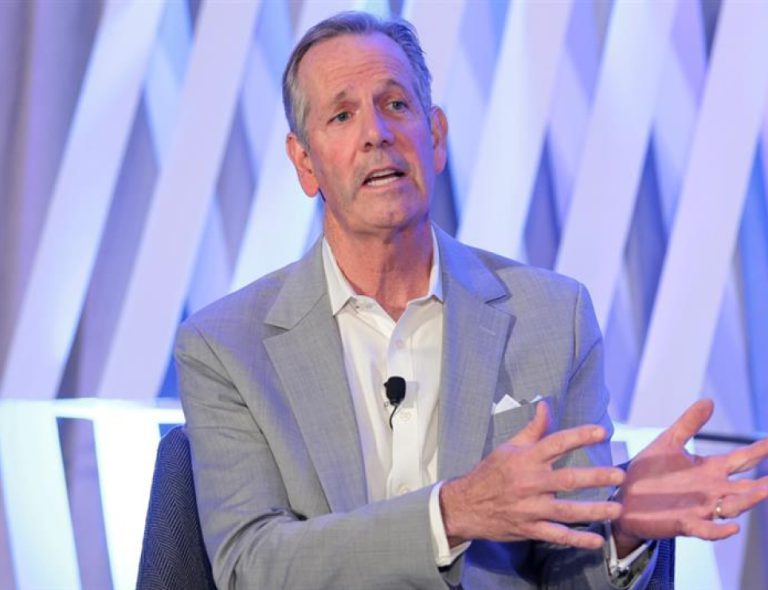To a growing number of asset managers, keeping a trading desk isn’t worth it any more.
There are the salaries, data feeds and computers. There are new technologies and sources of liquidity from dark pools to systematic internalizers to keep up with. Then there are the reams of rules — perhaps you have heard of MiFID II.
Enter outsourced trading. Once a niche business aimed at startups, these desks are seeing demand grow as money managers face mounting pressure to cut costs in an increasingly onerous market environment.
Northern Trust Corp., custodian for $8 trillion of assets, is in talks with 40 potential new clients for its platform, while Bank of New York Mellon Corp.’s subsidiary says it’s tapping into more U.K. wealth managers keen to offload trading. Jefferies Financial Group Inc., which has drawn more than 60 clients since entering the business in June, is expanding the offering into Europe and Asia.
“When faced with more margin pressure, what do you have to do?” said Gary Paulin, London-based global head of Integrated Trading Solutions at Northern Trust Capital Markets. “You have to look at your operating model. You have to address what fixed costs you can remove.”
Not all asset managers have trading desks to begin with; smaller ones tend to rely on outsourced teams or their own fund managers to buy and sell securities. But increasingly, even larger players are showing interest in outsourcing trading.
More Intimate
Under this model, instead of passing an order to traders down the hallway, fund managers give it to an outsourced team for a fee. It might sound a little like agency or prime broking, but outsourced trading is more intimate, with the provider acting almost as in-house traders from afar, offering market color and updates on existing positions, said Michael Horan, head of trading for EMEA at Pershing Ltd., BNY Mellon’s London-based subsidiary.
Outsourcing is part of asset managers’ strategy to defend margins as they cut prices to compete with zero-fee passive funds. The move could further shrink the financial industry’s pool of traders, which has already dwindled due to the growth of electronic trading. The largest banks have seen their front-office equities headcount drop in each of the last five years through the first quarter, according to Coalition Development Ltd.
Trading itself has become a trickier business. Buying and selling global securities means having to navigate time zones and overseas regulations. With market liquidity fragmenting, a trader also has to keep tabs on an array of sources to make the best trade.
In the European Union, the Markets in Financial Instruments Directive (MiFID) rules that started in early 2018 have also increased traders’ regulatory burden. They imposed stricter controls known as best execution to ensure fund managers are getting the best prices for their clients, and made them separate research costs from trading commissions.
“They’re forced to be a lot more forensic in terms of the execution quality they get from their brokers,” said Horan at Pershing.
Growing Audience
It’s been a boon for outsourced trading. Opimas, a consultancy, estimates that a fifth of investment managers overseeing more than $50 billion will outsource at least parts of their trading by 2022. Whereas the service used to target newly launched funds, it’s increasingly common for asset managers overseeing more than $5 billion to tap that as well, according to Richard Johnson, vice president at consultant Greenwich Associates.
Northern Trust, which first started offering the service in 2017, has signed 38 clients and is planning a promotional roadshow in the U.S. later this year, Paulin said. Horan said Pershing has seen “significant” business growth since MiFID II, with the typical client being a U.K. wealth manager with just two to five traders.
According to Andrew Walton, head of European business at Tourmaline Partners LLC, which specializes in outsourced trading, the largest source of growth is among asset managers overseeing $10 billion to $100 billion that are looking to supplement their own desks.
Of course, outsourcing isn’t for everyone and it all depends on a fund’s size. Opimas estimates that including associated charges such as market data, each buy-side trader costs an asset manager at least $500,000 a year and can handle about $1.5 billion of annual stock trading volume. For funds with turnover below that, outsourcing makes more sense, but for bigger ones, an in-house team has its perks.
“Most larger buy-side firms will probably just want to keep control of their trading desk,” said Anish Puaar, European markets structure analyst at Rosenblatt Securities Inc. in London. “A lot of the bigger firms will see the ability to understand today’s complex market structure as a differentiator.”
‘Sweet Spot’
For large funds that are keeping their traders, some are even considering providing such services themselves to get more bang for their buck, according to Sophie Baumeyer, a director at Cognizant Consulting’s capital markets division in Paris.
“The cost of running a trade desk is a very capital-intense business,” said Horan at Pershing. “There’ll be more of a move toward outsourced trading, but for the time being, the sweet spot is certainly the kind of mid-market-level.”

